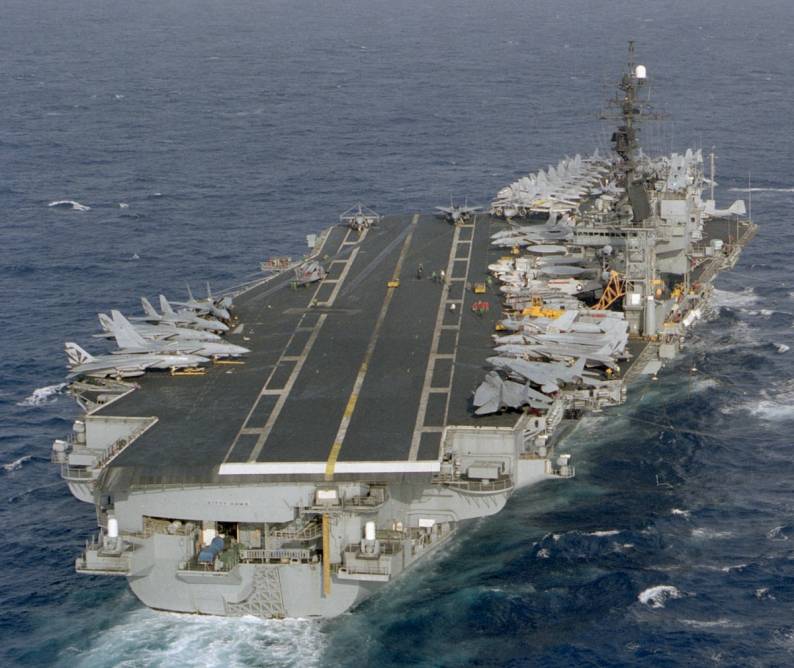
ASCAC worked in close conjunction with the ASW aircraft assigned aboard Carrier Air Wing 11.


One of the major equipment/space changes in the conversion was the addition of the Anti-Submarine Classification and Analysis Center (ASCAC) in the CIC area. The conversion consisted of adding 10 new helicopter calibrating stations, installing sonar/sonobuoy readout and analysis center and associated equipment, and changing a large portion of the ship's operating procedures.

Kitty Hawk became the first Pacific Fleet carrier to carry the multi-purpose "CV" designation. The "CV" designation indicated that Hawk was no longer strictly an attack carrier, in that anti-submarine warfare would also become a major role. Kitty Hawk moved into dry dock on 14 January 1973, and work began to convert the ship from an attack (CVA) to a multi-mission carrier (CV). Checkout Simplemost for additional stories.From January through July 1973, Kitty Hawk changed homeports from San Diego to Hunter's Point. This story originally appeared on Simplemost. The trip could take 130 days or longer to complete. At more than 280 feet wide, it’s too large to pass through the Panama Canal. The ship will travel 16,000 miles to its last destination, rounding the South American continent. USS Kitty Hawk (CV-63), departed Bremerton for a 16,000-mile journey around South America for its ultimate fate: scrapping at a Texas shipyard. Here’s a post from Armed Forces showing the ship starting off for Texas. The aircraft carrier was also the first to be awarded a Presidential Unit Citation. It even survived a collision with a Soviet submarine. It was also used in countless missions, including testing to determine whether U-2 spy planes could be launched from the deck of a carrier. The association could only raise about half of the amount required to decontaminate, develop and maintain the ship as a museum.Īlthough it gained a reputation for being a difficult posting due to age and shoddy workmanship, Kitty Hawk participated in combat operations around the world, including six tours in Vietnam and operations in Afghanistan and Iraq. The Navy sold the vessel after rejecting a bid from the USS Kitty Hawk Veterans Association to convert the ship into a museum stationed at Long Beach, California. The other two ships in the class were either scrapped or scuttled. The Kitty Hawk was the first carrier of its three-ship Kitty Hawk class. For another penny, the company also got USS John F. Built for $264 million in 1961 ($2.5 billion in 2021), the Kitty Hawk was sold to the scrap company for the bargain price of 1 cent. USS Kitty Hawk today started her final voyage from Bremerton to a scrapyard in Texas. “USS Kitty Hawk today started her final voyage from Bremerton to a scrapyard in Texas.

As noted in this Twitter post, the Navy sold the Kitty Hawk and a second aircraft carrier to the company, International Shipbreaking Ltd., for only one cent apiece. 15, heading to a ship-breaking facility in Texas. The massive naval vessel departed Naval Base Kitsap-Bremerton, Washington, on Jan. Now, the last oil-fired Navy aircraft carrier (modern carriers are nuclear-powered) has embarked on its final voyage. Then, early in 2021, the ship was moved into dry dock to remove marine growth from the hull. It spent the bulk of its retirement at Puget Sound Naval Shipyard. After nearly 50 years in service, the Navy decommissioned the first-in-class ship in 2009. Named for Kitty Hawk, North Carolina, where Orville and Wilbur Wright made the first successful controlled powered airplane flights in 1903, the USS Kitty Hawk is an aircraft carrier that was first launched in 1960.


 0 kommentar(er)
0 kommentar(er)
